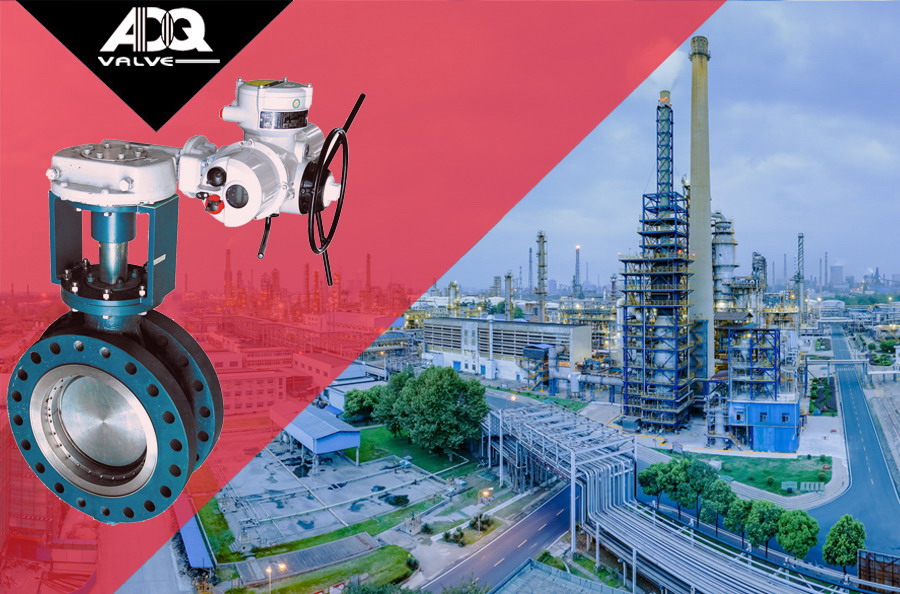News
News
您的位置:主页 > News > Industry News >
Working Principle and Basic Composition of scotch yoke pneumatic actuator
The actuating mechanism and regulating mechanism of pneumatic actuator are unified as a whole. The actuating mechanism of pneumatic actuator includes film type, piston type, fork type and gear rack type. The piston stroke is long and suitable for situations requiring greater thrust, while the membrane stroke is small and can only drive the valve stem directly. Pneumatic fork actuator has the characteristics of large torque, small space, torque curve more in line with the torque curve of the valve, but it is not very beautiful; it is commonly used in large torque valves. The rack-and-pinion pneumatic actuator has the advantages of simple structure, stable and reliable operation, and safety and explosion-proof. It is widely used in power plants, chemical industry, oil refining and other production processes with high safety requirements.
Working Principle of Pneumatic Actuator
When compressed air enters the pneumatic actuator from nozzle A, the gas pushes the two pistons to move in a straight line toward both ends (cylinder head end). The rack on the piston drives the gear on the rotating shaft to rotate 90 degrees counterclockwise, and the valve is opened. At this time, the gas at both ends of the pneumatic actuating valve is discharged with the B-tube nozzle. Conversely, when compressed air enters the two ends of the pneumatic actuator from the B-shaped nozzle, the gas pushes the two plugs to move in a straight line towards the middle. The rack on the piston drives the gear on the rotating shaft to rotate 90 degrees clockwise, and the valve is closed. At this time, the gas in the middle of the pneumatic actuator is discharged with the A-tube nozzle. The above is the standard transmission principle. According to user's demand, pneumatic actuator can be equipped with the transmission principle opposite to the standard type, that is, to select the standard axis to turn clockwise to open the valve and counter-clockwise to turn to close the valve. Single-acting (spring reset) pneumatic actuator A pipe nozzle is the intake port, B pipe nozzle is the exhaust port (B pipe nozzle should be installed muffler). The inlet of A-tube nozzle is to open the valve, and the valve is closed by spring force when the air is cut off.

The types and structures of the regulators of pneumatic actuators are basically the same, mainly because the actuators are different. Therefore, the introduction of pneumatic actuator is divided into two parts: actuator and control valve. Pneumatic actuator is composed of actuator and regulating valve (regulating mechanism). According to the size of the control signal, the corresponding thrust is generated to push the control valve. The regulating valve is the regulating part of the pneumatic actuator. Under the thrust of the actuator, the regulating valve produces a certain displacement or rotation angle to directly regulate the flow of fluid.
1. Pneumatic devices are mainly composed of cylinders, pistons, gear shafts, end caps, seals, screws, etc. A complete set of pneumatic devices should also include opening indication, travel limit, solenoid valve, positioner, pneumatic components, manual mechanism, signal feedback and other components.
2. Connection dimensions of pneumatic devices and valves shall comply with the requirements of ISO5211 (bottom), GB/T12222 and GB/T12223.
3. When the air source is interrupted, the pneumatic device with manual mechanism should be able to open and close the pneumatic ball valve. When facing the handwheel, the handwheel or handle should rotate counterclockwise to open the valve and clockwise to close the valve.
4. When the end of piston rod is internal and external threads, there should be a suitable wrench opening for standard wrench.
5. The sealing ring of piston should be easy to replace and repair.
6. The stroke length of a pneumatic device with a buffer mechanism can be referred to in Table 1.
7. The pneumatic device with adjustable buffer mechanism should have a mechanism to adjust its buffer function outside the cylinder block.
8. Thread size of cylinder inlet and outlet shall comply with MANUR NORM (Annex Standard) sypv, GB/T7306.1, GB/T7306.2 and GB/T7307.
Understanding the working principle and basic composition of scotch yoke pneumatic actuator will help us better understand the performance of the fork pneumatic actuator, and bring the advantages of the scotch yoke pneumatic actuator into full play.






